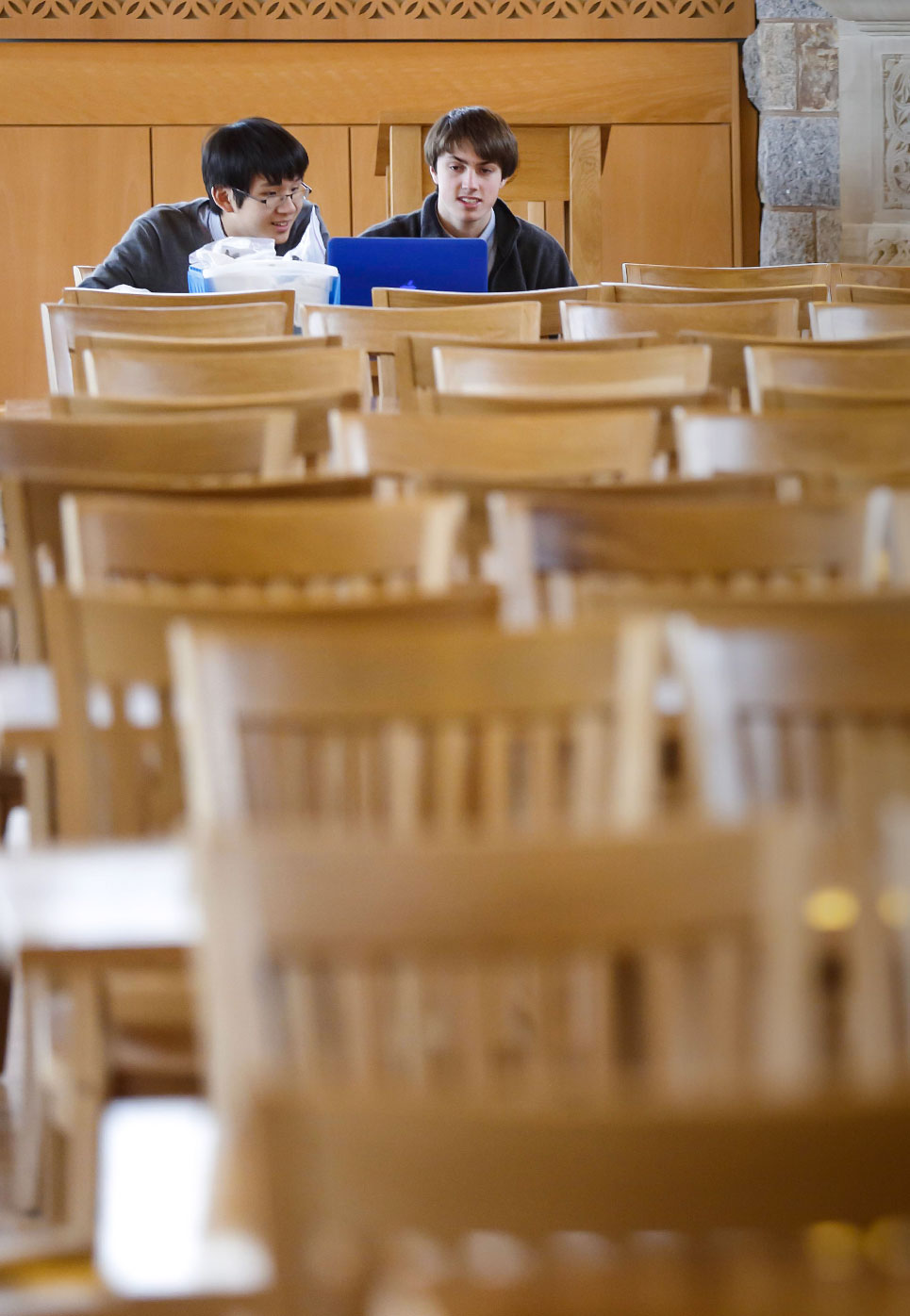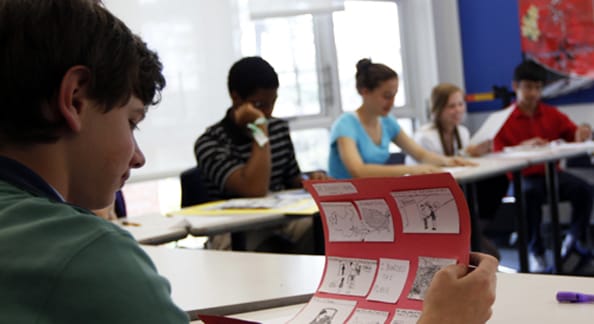Through literature ranging from classic novels to contemporary stories, Class V English focuses on the diversity of human experience, teaching students how to understand and analyze content and how to write clearly. In a recent lesson, students followed the life of a young girl, Marjane, from age 10 to 14 during the Islamic Revolution in Iran. Unlike Romeo and Juliet and A Raisin in the Sun—texts that have been taught in Class V for longer—Persepolis is a graphic novel that paints a portrait of daily life in Iran through compelling black and white comic strip images.
The graphic novel allows students to understand the human experience through less conventional media. It challenges them to analyze multiple components of the comic such as illustration, narrative and dialogue and consider how the elements work together to tell a story. Classroom discussions emerge about the author’s use of colors, texture, words, frames and camera angles.
“Part of what’s cool about it [Persepolis] is often times kids who are really strong English students struggle with it and it’s hard for them to read a graphic novel, and sometimes kids who struggle with more traditional novels do well with this,” says Thomas Forteith, English teacher. “What I like about it is it challenges some students and gives other students a chance to succeed where normally they would not.”
He adds that it also gives students a perspective of a time in history that they are not familiar with and an understanding of the human effects of war and political repression. And for students who are interested in history, they find connections in the story to current events in the Middle East.
“Part of deciding on books is finding a balance between giving kids a window to another world and giving them a mirror of their own so they can see themselves in it,” says Forteith.
Persepolis is essentially a coming-of-age novel. Despite obvious differences, Forteith hopes that upon completing their autobiographical comic project, students will find connections and parallels to Marjane’s life.
Students get a taste of the process of composing a graphic novel as they write and illustrate a story about times in their lives when conflicts emerged. They consider what to convey visually, through narration, dialogue or thought.
“I like these kinds of projects and the graphic component because it facilitates an understanding of abstraction. They are at the age where they are going from concrete thinkers to abstract thinkers,” says Forteith.





